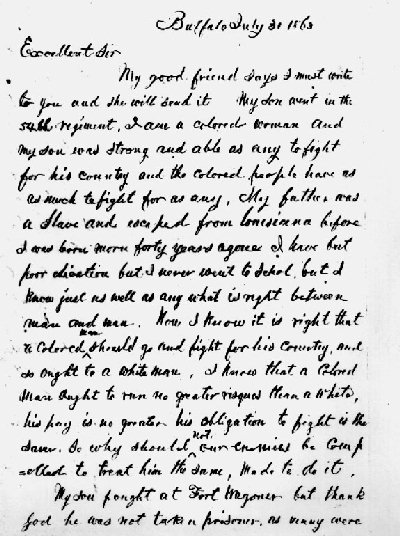Massachusetts
Studies Project
Local History Teaching Tools
** DOCUMENTS **
 Introduction:
History comes alive when students are engaged with primary source materials.
Original documents, whether public or private, help to provide context for
historical events because they were created by people who participated in
or witnessed the events of the past. For the purposes of this template,
primary source documents include local first person accounts (e.g. diaries,
memoirs, correspondence) and public documents (e.g. correspondence, treaties,
laws, speeches.) Using primary source documents helps students develop cognitive
skills including analysis, interpretation, perspective, empathy and self-knowledge.
Introduction:
History comes alive when students are engaged with primary source materials.
Original documents, whether public or private, help to provide context for
historical events because they were created by people who participated in
or witnessed the events of the past. For the purposes of this template,
primary source documents include local first person accounts (e.g. diaries,
memoirs, correspondence) and public documents (e.g. correspondence, treaties,
laws, speeches.) Using primary source documents helps students develop cognitive
skills including analysis, interpretation, perspective, empathy and self-knowledge.
General Teaching Tips: Because of preservation concerns, there are often limitations on how much, or whether, original documents can be handled by students. Digitized copies of original documents can serve as working versions for examination, transcription, etc., and have the added benefit of being enlargable, printable and annotatable. However, whenever possible, arrange for students to see the original up close at least once. So much of modern life is in facsimile that it can be important for students to viscerally understand that historic documents are real artifacts related to real peoples' lives.
Town clerks, local librarians and historical society staff are sometimes able and willing to collaborate with schools in digitizing select documents for educational use. Scanned documents can be posted on a local website for many classes to use.
Although younger students may have difficulty reading primary source documents, they can sometimes participate in the excitement of "decoding" old handwriting by working in pairs on a small portion of a document. Using an alphabet chart to help decipher just a few words, each team contributes decoded phrases to the whole.
Basic Questions
- Is this document a primary or secondary source? How do you know?
- Who wrote this document and why?
- What do you know about this author/creator?
- When was it written? If no date is listed, what clues are there that could help date it?
- Where was it written and where is the document now found? (owner, repository)
- What is the document about? (title/subject)
- Who was the intended audience?
- Was the document meant to be public or private?
- What tools were used to write it and what is its appearance? (handwritten with quill, pen, pencil? Typewritten? Printed?
- What type of paper was used?
Critical Thinking Questions
- For whom was the document created?
- What sorts of information does the document supply?
- Under what circumstances was the document created? What did the creator hope to accomplish by creating this document? How would this influence the content of the source?
- What were the opinions, motivations, or interests of the creator?
- How does his or her point of view compare to other writers of the period? What kind of impact would this have on the content of the source?
- How reliable is this document for historical accuracy? What criteria can you use to determine historical accuracy?
- Can you trust the source's content at face value? Did the creator wish to inform, persuade, or deceive his or her audience?
- What did you already know about the subject of this document and how did this knowledge affect the way you read it?
- What additional information is needed to help you understand the subject more fully?
- What questions would you like to address the author of this document?
- How can you find out more about the context of this document?
Worksheet
Document Analysis Worksheet: (National Archives and Records Administration)
Resources and Websites
"Making Sense of Letters and Diaries" - by Steven Stowe. This guide offers an overview of letters and diaries as historical sources and how historians use them, tips on what questions to ask when reading these personal texts, an annotated bibliography, and a guide to finding and using letters and diaries online.
"Spy Letters of the American Revolution" University of Michigan. A superb teaching site using digitized versions of original documents. Timeline, documents, decoding, maps, portraits.
"The Virtual Yesterday Diary Database" an ongoing project to transcribe daybook diaries from Massachusetts into an online, searchable database. Transcription teams may apply to use the online database entry system to store data from local diaries.
"DoHistory.org" Basic skills and techniques for interpreting documentary fragments that survive from any period in history.
Model Lesson Materials
Teaching With Documents: Lesson Plans. Reproducible copies of primary documents from the holdings of the National Archives of the U.S., teaching activities and cross-curricular connections.
"Diary of an Individual" Youth Source: Youth and Heritage Learning Source
"Using Primary Sources in the Classroom" Suggestions for using primary sources compiled from the National Digital Library's Educators' Forum held in July 1995 and from the Library staff.
"Handwriting: Unlocking the Past" Introduction to the topic of handwriting, the history of handwriting, and learning how to transcribe old handwriting. Interactive on line resources.
This
resource book was developed with support from
The Massachusetts Historical Records Advisory Board, Office of the Secretary
of the State
and
The Massachusetts Foundation for the Humanities